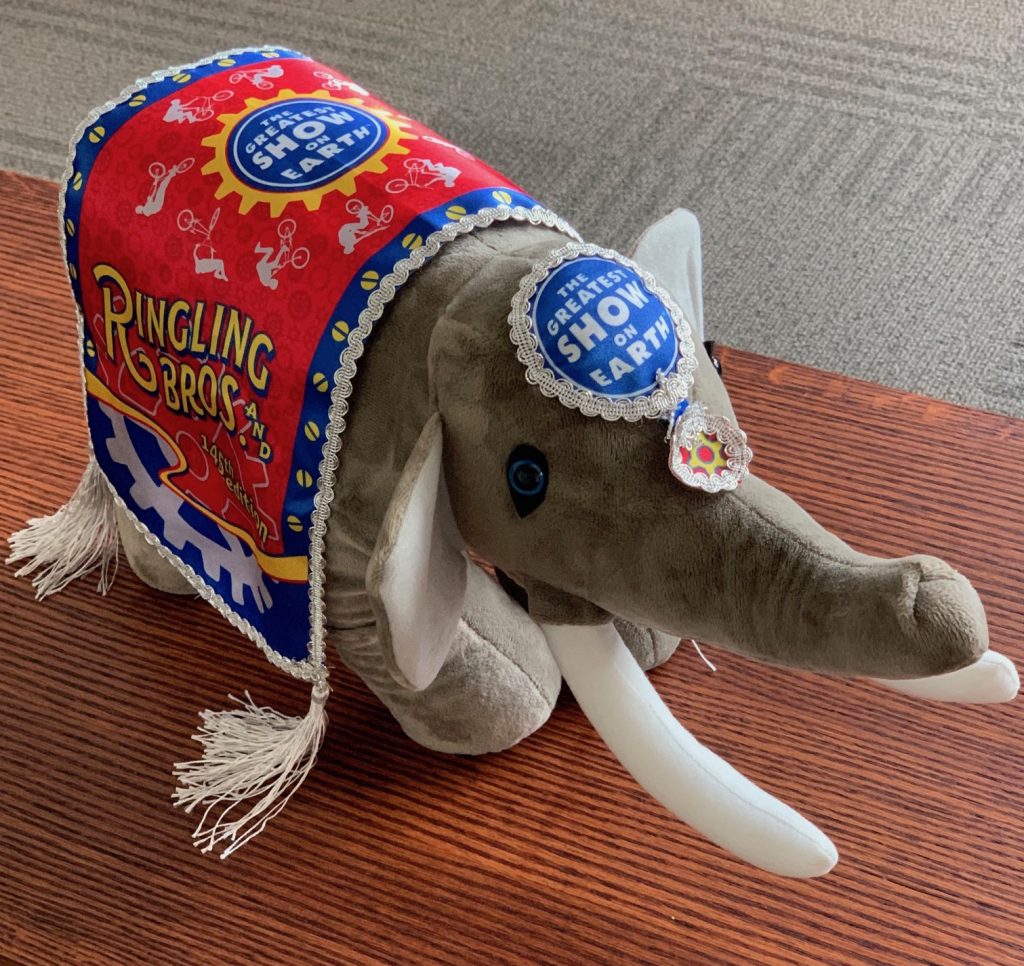
In 1938 the Ringling Bros. and Barnum & Bailey Circus was, in fact, “the Greatest Show on Earth.”
Their annual tour opened in the spring of that year with a twenty-three-day sojurn at Madison Square Garden. The circus was so popular that it performed twice daily in New York (forty-six shows in all) before caravanning north, to Boston. This was America’s most famous traveling show, and it would take only one day off before ending the season in Mobile, Alabama, six months later.
I’ve always loved the circus. For Christmas one year our daughter Sydney gave me a framed copy of an original poster from that 1938 tour stop in Manhattan. The festive scene features a giant elephant and two clowns in the foreground with the big top and its colorful flags as the backdrop. Few who attended that year would have guessed that the elephant, the iconic star of the three rings, would one day play a leading role in the circus’s demise.
* * *
In 2016, the Ringling pachyderms marched off stage for the final time in response to public concerns about their treatment as circus show animals. This was a little recognized but pivotal moment in the dawning of the age of dispersed power. The physical and emotional well-being of a small herd of elephants was taking precedence over the economic needs of an entire industry. For those paying attention, it was a sign of the times indeed.
One year later, on Sunday, May 5, 2017, my wife Alison and I traveled from Maine to Providence, Rhode Island, to watch the last-ever performance of the Ringling Bros. Circus extravaganza.
“The elephant that once made the circus helped to end the circus,” I said to Alison that night from our tight row of plastic seats inside the dilapidated Dunkin’ Donuts Center.
We had just watched the last act of the famed Ringling Bros. tigers. Their trainer, Taba Maluenda, and his felines received a five-minute standing ovation. Former Ringling Bros. employees from around the world were on hand to bear witness. The tigers themselves seemed to know it was over.
“Sunday night the lights went out on the Greatest Show on Earth,” reported the Providence Journal the following day. For me, it was the night the tiger trainer cried and one of the most historic and symbolic moments of the twenty-first century.
* * *
What’s the lesson here? It wasn’t the elephants that changed; rather, humanity’s sense of right and wrong evolved. This brings forth an important point: An idea that is helpful in one era can actually be detrimental, or even fatal, in the next.
The well-being of a small group of elephants had become more important to society than the circus empire as a whole.
Power was being dispersed.
The individual (in this case, elephants) was coming first.
Putting individuals second and organizations first may well have helped empires grow for centuries. But today, self-centered governance is a leading cause of human disengagement and institutional ineffectiveness, and the clock is ticking on this hierarchical dance of old.
The playbook of leadership and followership is turning itself inside out. The old model of leadership was about pulling power to the center and making the influence of the capital or headquarters bigger. The new model that is manifesting before our eyes is about pushing that same power back out and learning to see the individual human spirit as the first priority and power source of society.
* * *
On the way out of the arena after that final circus show, I purchased two stuffed Ringling Bros. elephants. For me they were historic pieces of Americana, now part of the past. They were also, in a way, mascots for the future of organizational and human advancement. Like the lesson itself, they were expensive yet priceless.
(This essay is an excerpt from Kevin’s second book, THE SEVENTH POWER: One CEO’s Journey into the Business of Shared Leadership.)
* * *
Thank you for considering my thoughts. In return I honor yours. Every voice matters. Nestled between our differences lies our future.
“They say that somewhere in Africa the elephants have a secret grave where they go to lie down, unburden their wrinkled gray bodies, and soar away, light spirits at the end.”
—Robert McCammon
_______________